The centre has the following members associated:
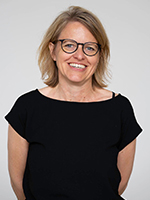
Nina Nørgaard is an Associate Professor of Applied Linguistics at the Department of Language, Culture, History and Communication. She has a PhD in stylistics (2002) and a dr.phil. in multimodal stylistics (2020). Her research interests lie within the fields of multimodal semiotics, multimodal stylistics, multimodal critical discourse analysis, typography, health communication, discourses of sustainability and the environment, and the semiotics of architecture.
In 2017, Nina was a Carlsberg Semper Ardens Research Fellow. This enabled the completion of her monograph, Multimodal Stylistics of the Novel: More than Words (Routledge 2019), in which she presents a comprehensive framework for multimodal stylistic analysis of novels which in addition to wording make use of semiotic resources such as (special) typography, layout, colour, images and other graphic elements for their meaning-making. Her recent publications and conference presentations focus on respectively multimodal discourses of sustainability and multimodal health communication.
Together with Theo van Leeuwen, Nina heads the International Sexual Health Promotion Network which researches the use of visual communication in sexual and reproductive health promotion in Australia, Brazil, China, Denmark, Iran, Malaysia and Nigeria. She is currently working on a project on multimodal sexual health communication in Denmark with Theo van Leeuwen, Alexandra Holsting, Cindie Maagaard and Carole Jepsen.
Nina teaches a broad range of disciplines in English language and communication, including courses on stylistics, multimodality and sustainability communication.
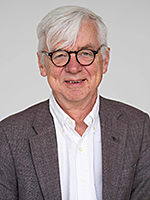
Theo van Leeuwen is Professor of Multimodal Communication at the University of Southern Denmark, Odense, Emeritus Professor at the University of Technology, Sydney, and Honorary Professor at the University of New South Wales, the Australian Catholic University and the University of Lancaster.
He researches and writes about social semiotics, multimodality, visual communication and critical discourse analysis. This has included work on radio announcing speech, media interviews, global magazines, toys as communication, sound and music, typography and decoration, and the application of multimodal analysis in organization and management studies.
His current projects at SDU are about the theory of visual communication (with Morten Boeriis), online shopping (with Morten Boeriis, Søren Poulsen and Gitte Rasmussen), and the use of visual communication in sexual and reproductive health promotion (with Nina Nørgaard, Carole Jepsen, Cindie Maagaard and Alexandra Holsting).
Theo was a founding editor of the journals Social Semiotics and Visual Communication. In other lives he has been a film director and a jazz musician.
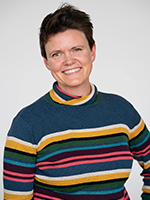
Alexandra Holsting is an Associate Professor of German linguistics at the Department of Language, Culture, History and Communication. Her research interests and work are concerned with grammar and grammatical categories, mostly (but not exclusively) within the framework of Systemic Functional Linguistics, as well as the application of SFL in health communication.
Alexandra has published several papers dealing with (grammatical) categories in SFL (e.g. projection, clause complex, fact-clause) as well as their application in descriptions og Danish and German grammar. Together with Thomas Hestbæk Andersen, she has authored a book on Danish grammar described within the framework of SFL, and she is currently writing a SFL-grammar of German with Uwe Helm Petersen. She is furthermore involved in a research project on multimodal sexual health communication with Nina Nørgaard, Theo van Leeuwen, Cindie Maagaard and Carole Jepsen.
Alexandra teaches different courses of German linguistics and German language proficiency courses and courses on Danish multimodal text analysis and text production.
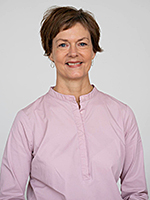
As a member of the Centre for Multimodal Communication, Associate Professor Cindie Maagaard explores how multimodal and narrative approaches to the analysis of communication can be mutually enhancing and challenging. Her focus is on narratives told within, by and about organizations and institutions, and she is particularly interested in understanding how narratives are used to construct and communicate identity within those contexts.
To this aim, she is also a member of the Centre for Organizational Practice, Communication, and Technology at SDU, as well the International Society for the Study of Narrative and the Nordic Network for Narratives in Medicine.
Most recently, Cindie has done work to advance analytical and theoretical approaches to how narratives about social responsibility constitute organizational understandings and practices, and she engages in several collaborations with the Health Sciences in the field of Narrative Medicine. This includes research on physicians’ writing in health records, and the narrative practices of nurses writing diaries for intensive care patients. This work has inspired a new project on personal narratives and/as narrative authority in the multimodal communication of sexual health.
Cindie teaches in organizational strategies, storytelling and communication; narrative medicine; and courses in writing across genres, media and contexts. She is an active contributor to conferences, journals such as Discourse, Context and Media; Literature and Medicine; and Narrative Inquiry and anthologies. Volumes that she has recently co-edited include Exploring Fictionality: Conceptions, Test Cases, Discussions and an anthology in Danish of writings by and about patients and health professionals.
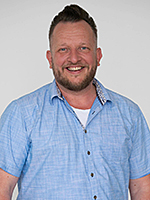 Morten Boeriis is a PhD in multimodality and moving images and an Associate Professor at the University of Southern Denmark. His work and research revolves mainly around the areas of multimodal theory, visual communication, film and photography. Furthermore, he teaches a variety of courses on visual communication at Film and Media studies and Business Communication studies and at SDU.
Morten Boeriis is a PhD in multimodality and moving images and an Associate Professor at the University of Southern Denmark. His work and research revolves mainly around the areas of multimodal theory, visual communication, film and photography. Furthermore, he teaches a variety of courses on visual communication at Film and Media studies and Business Communication studies and at SDU.
Among his publications are:
- ‘Towards a grammar of manipulated photographs: the social semiotics of digital photo manipulation’ (2023), in: Truthfulness and Truth Claims Across Media. Schirrmacher, B. & Mousavi, N. (red.). Palgrave Macmillan.
- ‘Structural meaning in shopping environments: A social semiotic approach to analysing multimodal structure in designed on- and offline environments’ (2023), in: ORGANIZATIONAL SEMIOTICS: Multimodal perspectives on organization studies. Ravelli, L., van Leeuwen, T. & Hoellerer, M. (red.). Routledge.
- ‘Emotive validity and the eye in the hand: Representing visual reality with digital technology’ (2021), in: Discourse, Context & Media. 41.
- ‘Accelerating semogenesis: an ecosocial approach to photography’ (with Johannessen) (2021), in: Visual Communication. 20, 4, p. 527-551.
- Advancing Multimodal and Critical Discourse Studies (2017) (with Zhao, Björgvall, and Djonov). Taylor & Francis.
- Social Semiotics – key figures, new directions (2015) with Andersen, Maagerø and Tønnessen. Routledge.
- Nordisk Socialsemiotik – pædagogiske, multimodale og sprogvidenskabelige landvindinger (2015) (with Andersen). University Press of Southern Denmark.
Morten was PI of the NOS-HS project The Remediation of Education (REED) 2017-19 and co-PI of the VELUX funded project The Digital (Re)semiotisation of Buying and Selling Interaction (RESEMINA) 2018-22. In 2018 he was the convener of 9th International Conference on Multimodality which was held at SDU in Odense.
Morten has a background of working in TV-production and as a freelance photographer.
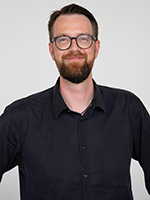
In 2014, Søren Vigild Poulsen earned his PhD with the thesis: Toward an Analytical Model for Analysis of the Website as Multimodal Text. He currently holds a position as Associate Professor at the Department of Language, Culture, History, and Communication at the University of Southern Denmark. Also, he serves as co-editor of Visual Communication.
His research covers topics in social semiotics, multimodality, digital and social media, transduction, as well as semiotic technology and semiotic software engineering (SSE). He is particularly interested in exploring how semiotic resources and social norms are designed into software programs and how technology affects and changes social practices. His ongoing projects include design history and discourses of Instagram, organizational change and software updates/upgrades, deepfakes, artificial intelligence and empathy, as well as social media marketing and software development as semiotic practices.
As a core member of the Centre for Multimodal Communication, Søren is actively involved in organizing seminars, publishing his research, and developing new courses on the abovementioned topics.
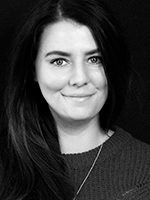 Sasja Simone Krogh is a research assistant who teaches various topics related to visual communication, multimodal social semiotics and business communication at the University of Southern Denmark.
Sasja Simone Krogh is a research assistant who teaches various topics related to visual communication, multimodal social semiotics and business communication at the University of Southern Denmark.
Her main research interest is the use of visual communication in extreme fora on the internet, especially how radical messages are communicated though memes, GIFs, etc.
She has an educational background in international business communication and wrote her master’s thesis, Extreme communication – a study in myths, memes and power, in 2020.
Associate members:
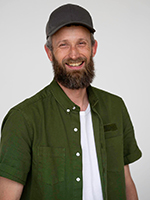 Formerly a core member of CMC, Christian Mosbæk Johannesen is now a special consultant at Læremiddel.dk.
Formerly a core member of CMC, Christian Mosbæk Johannesen is now a special consultant at Læremiddel.dk.
Originally a scholar of multimodal social semiotics with special interest in corporate logos and corporate identity design.
Over the past decade Christian has ventured ever deeper into the intersection between semiotics, media studies, materiality studies, ecological psychology and cognitive science.
His main empirical interest is our embodied experience of graphic traces.
In collaboration with Theo van Leeuwen, Christian is the editor of The Materiality of Writing. A Trace Making Perspective (Routledge).

After moving to Denmark with her family, Ilaria Moschini became an associate member of CMC in 2019.
Her main research interests are political and institutional language, and media/digital media language that she investigates using a framework that combines critical discourse analysis with a socio-semiotic approach to multimodality.
Currently, she is studying digital discourse, including its material infrastructure. Ilaria is an assistant professor at the University of Florence, Department of Education, Languages, Intercultures, Literatures and Psychology.
